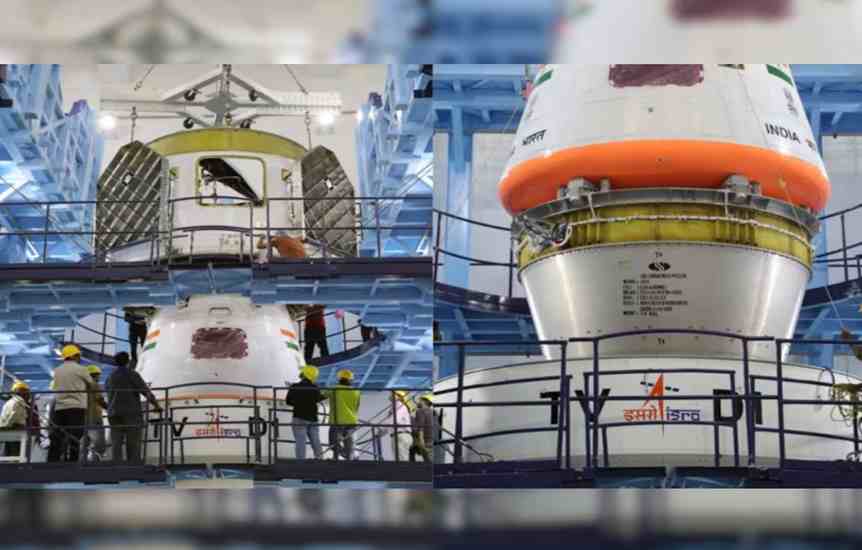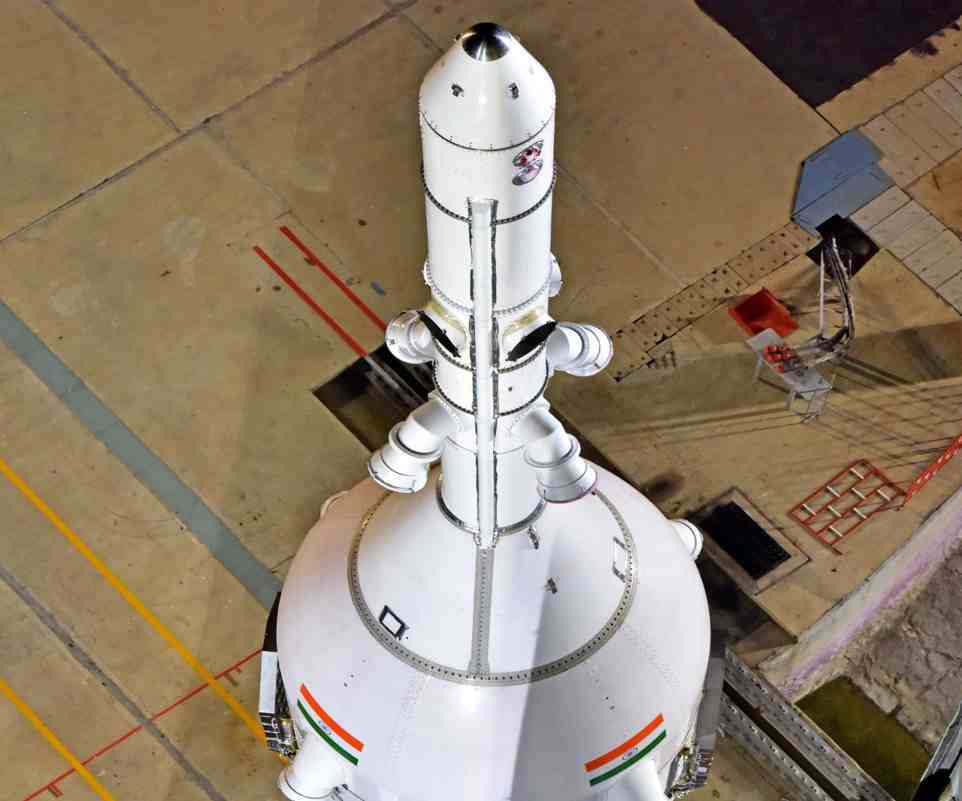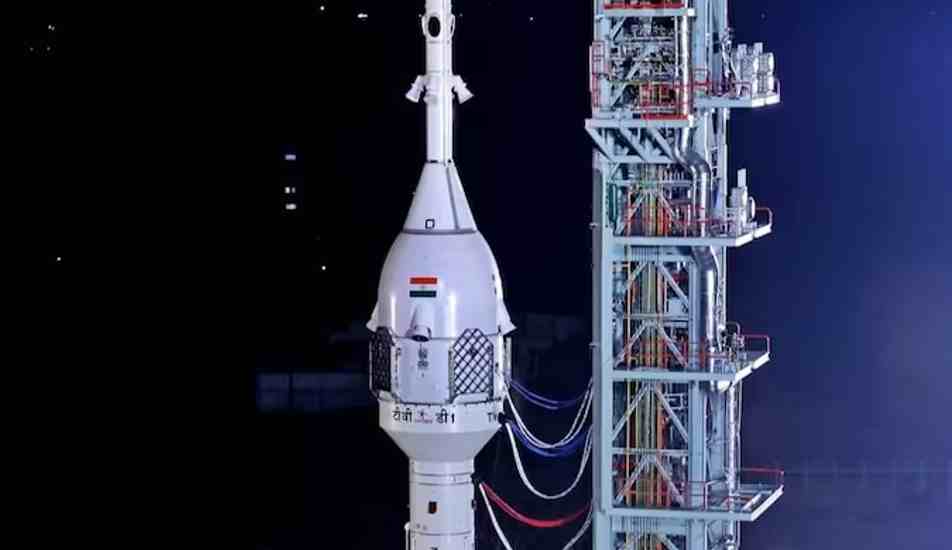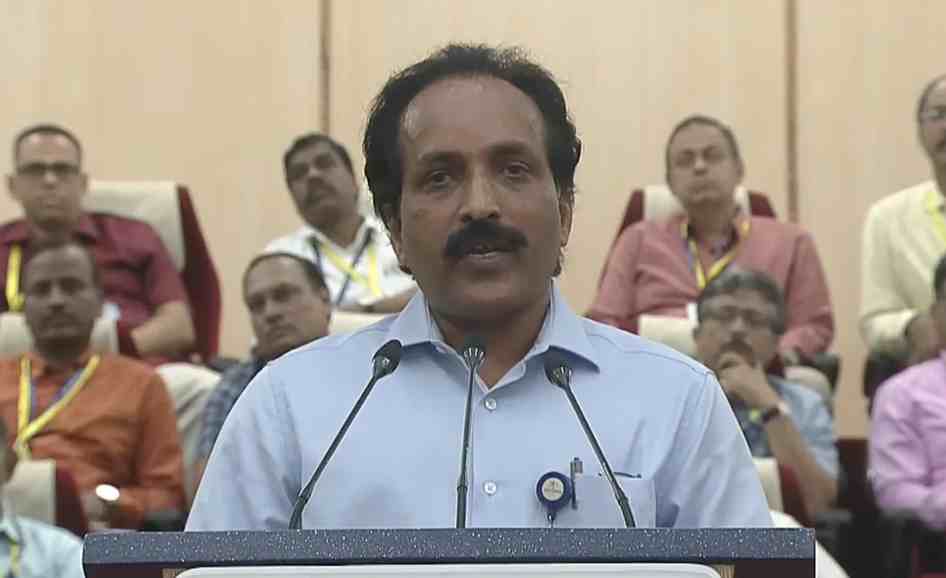
Introduction
In the vast expanse of space, humanity has always found its greatest challenges and its most profound inspirations. The pursuit of knowledge, exploration, and our unyielding determination to stretch beyond the confines of Earth have been the hallmark of our species. And now, at the threshold of a new era, India stands poised to join the pantheon of spacefaring nations with the Gaganyaan program. This is our time to transcend limits, push the boundaries of possibility, and to inspire the world with our cosmic ambition.
Gaganyaan is more than a mission; it is a statement of India’s unwavering commitment to the exploration of the cosmos. It’s a declaration that no dream is too audacious, no hurdle too insurmountable. As we prepare to launch our own astronauts into space, we stand shoulder-to-shoulder with the pioneers of human spaceflight. This endeavor is not just a technological feat; it’s a testament to our relentless pursuit of excellence and a symbol of the infinite potential that resides within us.
At the heart of this endeavor is the TV-D1 test vehicle, an emblem of meticulous planning, rigorous testing, and unyielding dedication to astronaut safety. The successful execution of the TV-D1 mission echoes a powerful message to the world: we are ready to chart a course through the cosmos, no matter the challenges or the delays. We adapt, reschedule, and press forward, undeterred by obstacles.
Astronaut safety is our lodestar. The crew escape system, showcased by the TV-D1 mission, embodies our commitment to safeguarding the lives of those who venture beyond our home planet. It represents our resolve to explore the cosmos with an unwavering dedication to protecting the intrepid men and women who dare to journey into the unknown.
The words of ISRO Chief S Somanath reverberate with inspiration. They embody the leadership and resolute dedication of ISRO to its mission, assuring the world that safety is our paramount concern. Our journey is an illuminating beacon, guiding others to follow in our footsteps, and reaffirming that no aspiration is beyond our reach.
In this grand cosmic odyssey, Gaganyaan epitomizes India’s power, our perseverance, and our pivotal role in shaping the destiny of human space exploration. Together, we embark on this extraordinary journey, transcending boundaries, unlocking the secrets of the cosmos, and igniting the flames of curiosity in all of us. The challenges we surmount, the victories we celebrate, and the vision we pursue are our tribute to human inquisitiveness, ingenuity, and the unstoppable spirit that propels us toward the stars. It is our promise that the cosmos shall not remain uncharted for long, and that the indomitable human spirit will continue to reach for the infinite.
Gaganyaan Mission Overview: Pioneering India's Human Spaceflight

The Gaganyaan mission, spearheaded by the Indian Space Research Organisation (ISRO), stands as a remarkable testament to India’s ambitions in space exploration. This initiative is designed to propel India into an exclusive league of nations capable of launching astronauts into space from their own soil. Below, we delve into the details of the Gaganyaan mission, its significance, and how it represents a remarkable leap forward for India’s space program.
The Ambitious Vision:
The Gaganyaan mission, conceived as a part of India’s ambitious space endeavors, aims to send Indian astronauts, known as vyomanauts, into space. This project marks a significant shift for ISRO, transitioning from robotic space exploration missions to crewed spaceflight. With this, India seeks to join a select group of countries that have achieved human spaceflight capabilities, including the United States, Russia, China, and more recently, SpaceX.
Gaganyaan’s Significance:
The Gaganyaan mission carries immense significance on multiple fronts:
- Scientific Advancement: The mission represents a leap forward in India’s technological prowess. It involves the development and deployment of advanced spacecraft, life support systems, and escape mechanisms, all of which contribute to India’s scientific and engineering capabilities.
- Global Recognition: Achieving human spaceflight capabilities places India on the global map of space exploration. It is a testament to the country’s progress and innovation in the field.
- National Pride: The Gaganyaan mission stirs a sense of national pride. It symbolizes India’s determination to conquer new frontiers and showcases its commitment to the pursuit of knowledge.
TV-D1 Test Vehicle:
As part of the preparation for the Gaganyaan mission, ISRO conducted the Test Vehicle-D1 (TV-D1) mission. This test vehicle is an integral part of the program, demonstrating critical systems such as the Crew Escape System. During the TV-D1 mission, the escape system’s ability to ensure astronaut safety during rocket launches was successfully tested. The significance of this test lies in the pivotal role the Crew Escape System plays in the Gaganyaan mission, safeguarding astronauts during emergencies.
Mission Objectives:
The TV-D1 launch served as a comprehensive test for various systems and technologies involved in the Gaganyaan mission. It included the evaluation of subsystems, the demonstration of the Crew Escape System, crew module characteristics, and deceleration system demonstrations at higher altitudes. The success of the TV-D1 mission is a major milestone in achieving the Gaganyaan objectives.
TV-D1 Test Vehicle: Paving the Way For Gaganyaan's Success
The Test Vehicle-D1 (TV-D1) is a critical component of India’s ambitious Gaganyaan program, playing a pivotal role in ensuring the safety and success of future human spaceflight missions. Here, we delve into the specifics of the TV-D1 and its significance in the broader context of India’s aspirations in space exploration.
Understanding TV-D1:
The TV-D1 is a test vehicle developed by the Indian Space Research Organisation (ISRO) as part of its preparations for the Gaganyaan mission. It serves as a prototype and testing platform for the systems and technologies that will be used in the actual Gaganyaan mission. This test vehicle was designed to validate key systems, particularly the Crew Escape System, which is paramount for the safety of astronauts during spaceflight.
Role in the Gaganyaan Program:
The TV-D1 is an essential element in the Gaganyaan program for several reasons:
- Crew Escape System Testing: One of the primary functions of the TV-D1 is to test and validate the Crew Escape System. This system is responsible for ensuring the safety of astronauts in the event of an emergency during launch or ascent. It is akin to a “lifeboat” that can quickly propel astronauts to a safe distance from the rocket in case of a malfunction. The successful demonstration of this system is crucial for the safety of future vyomanauts.
- Subsystem Evaluation: The TV-D1 mission involves the evaluation of various subsystems that will be employed in the Gaganyaan spacecraft. This includes testing life support systems, communication systems, and other critical components that are essential for the well-being and functionality of the crew during their mission.
- Demonstration of Deceleration Systems: The TV-D1 mission also includes the demonstration of deceleration systems at higher altitudes. This is vital for ensuring a safe descent and landing of the crew module during the actual Gaganyaan mission.
The TV-D1 Mission Success:
The TV-D1 mission, which culminated with a successful launch, marked a significant achievement for ISRO. It demonstrated the capability of the Crew Escape System to swiftly and effectively ensure the safety of astronauts during a launch. As the test vehicle reached specific altitudes and speeds, the system separated the crew module, preparing it for a controlled descent and landing.
The successful TV-D1 mission provided ISRO with invaluable data and insights into the performance of these critical systems, ensuring that they meet the stringent safety standards required for human spaceflight. This achievement instills confidence in ISRO’s ability to carry out future Gaganyaan missions.
Launch Delay and Rescheduling: Navigating Challenges on the Path to Gaganyaan

The road to launching a mission as complex and ambitious as Gaganyaan is often fraught with challenges. One such challenge that the Indian Space Research Organisation (ISRO) faced during the Test Vehicle-D1 (TV-D1) mission was launch delay and rescheduling. Let’s explore the reasons behind these delays, including weather conditions and technical glitches.
Weather Conditions as a Culprit:
Launch delays often result from Mother Nature’s unpredictable temperament. The initial scheduled lift-off of TV-D1 was set for 8 a.m. However, it was rescheduled to 8:45 a.m. and eventually took place at 10 a.m. This delay can be attributed to unfavorable weather conditions and poor visibility. Adverse weather, such as cloudy skies and rainfall, can pose serious safety concerns during a rocket launch. Space agencies must take precautions to ensure the safety of the mission, the crew, and the equipment on board. Rescheduling the launch was a necessary precautionary measure to mitigate the impact of inclement weather.
Technical Glitches Complicating Matters:
In addition to weather conditions, technical glitches also played a role in the launch delay. Launching a rocket is an intricate process, and even minor technical issues can jeopardize the mission’s success. In the case of TV-D1, technical glitches needed to be resolved before the launch could proceed. It’s not uncommon for space missions to experience last-minute technical setbacks, as rocket systems and components must function with pinpoint precision.
The Importance of Caution:
The decision to delay and reschedule a launch is not taken lightly. It is a testament to the commitment of space agencies like ISRO to prioritize safety and mission success over meeting strict timelines. When launching missions into the vast expanse of space, ensuring that all systems are functioning optimally and that external conditions are as favorable as possible is paramount.
Learning from Delays:
Delays, while frustrating, provide valuable opportunities for learning and improvement. Each delay allows space agencies to further refine their procedures, review technical systems, and strengthen their overall readiness. These experiences contribute to a more robust space program, ultimately increasing the likelihood of mission success.
Crew Escape System: A Lifeline for Astronaut Safety

In the realm of human spaceflight, where every second counts and every detail matters, the Crew Escape System stands as a sentinel of astronaut safety. This critical component, integral to the Gaganyaan mission, serves as a failsafe mechanism, ready to act in the event of an emergency during launch or ascent. Let’s delve into the intricacies of the Crew Escape System, its significance, and its unwavering commitment to preserving the lives of astronauts.
Understanding the Crew Escape System:
The Crew Escape System is a sophisticated, meticulously designed system that forms an integral part of any crewed space mission. It functions as a last-resort measure, designed to swiftly and safely evacuate astronauts from the launch vehicle or spacecraft in the event of a malfunction, ensuring their survival and well-being.
Key Components of the Crew Escape System:
The Crew Escape System comprises several crucial components, each playing a specific role in ensuring astronaut safety:
- Launch Abort System (LAS): This system is responsible for quickly propelling the crew module away from the launch vehicle during a launch abort situation. It consists of powerful motors and a control system to achieve rapid separation.
- Crew Module: The crew module is the capsule in which astronauts are seated. It is equipped with life support systems, communication equipment, and safety measures. The crew module must be safely separated from the launch vehicle to initiate the escape process.
- Parachute Systems: Following separation from the launch vehicle, the crew module descends back to Earth under a series of parachutes. These parachutes are carefully designed to ensure a controlled and safe descent.
Importance in Astronaut Safety:
The Crew Escape System is of paramount importance in ensuring the safety of astronauts during a mission. Its significance lies in several key aspects:
- Rapid Response: In the event of a launch emergency, time is of the essence. The Crew Escape System’s ability to act quickly, within a matter of seconds, can be the difference between life and death for the astronauts on board.
- Fail-Safe Redundancy: The system is designed with multiple layers of redundancy to ensure that it functions as intended, even in the face of technical failures or other emergencies.
- Peace of Mind for Astronauts: Knowing that a reliable Crew Escape System is in place provides astronauts with the confidence to embark on their missions, knowing that their safety is a top priority.
Testing and Demonstration:
The recent TV-D1 mission played a crucial role in testing and demonstrating the efficacy of the Crew Escape System. This test provided valuable data on its performance, particularly under real-world conditions, and ensured that it meets the rigorous safety standards required for human spaceflight.
ISRO Chief's Statements: Guiding Lights Of The Gaganyaan Mission

In the dynamic world of space exploration, the guidance and vision of leaders are essential. ISRO’s Chief, S Somanath, has played a pivotal role in shaping and steering the Gaganyaan mission. His quotes and statements provide insight into the mission’s significance and the agency’s dedication to its success. Let’s explore some of the key statements made by ISRO Chief S Somanath and their relevance to the mission.
Statement 1: “I am very happy to announce the successful accomplishment of the TV-D1 mission.”
ISRO Chief S Somanath’s words resonate with the collective sense of achievement following the successful launch of the TV-D1 mission. This statement underscores the importance of this mission in validating critical systems for the Gaganyaan program. The successful accomplishment of TV-D1 signifies a major milestone in India’s journey towards human spaceflight.
Statement 2: “The purpose of this mission was to demonstrate the crew escape system for the Gaganyaan program.”
S Somanath’s statement clarifies the primary objective of the TV-D1 mission, which was to showcase the Crew Escape System. This system is instrumental in ensuring astronaut safety during a launch emergency. His statement highlights the mission’s focus on testing and perfecting the technology that will safeguard the lives of vyomanauts.
Statement 3: “The entire vehicle was very safe. We will have to reach the vehicle and then look at what has happened now.”
This statement reflects ISRO’s commitment to the safety and reliability of its missions. S Somanath emphasizes the need to assess the situation, even after a delay or anomaly, ensuring that all aspects of the mission are thoroughly reviewed and validated. This meticulous approach is crucial for ensuring mission success and astronaut safety.
Statement 4: “Mission Gaganyaan gets off on a successful note.”
S Somanath’s declaration celebrates the fact that the Gaganyaan program is off to a successful start with the TV-D1 mission. This achievement is not just a technical success but also a significant milestone for India’s space program and its aspiration to send its own astronauts into space.
Statement 5: “The D-day was today.”
This statement by the ISRO Chief encapsulates the culmination of years of dedication, hard work, and anticipation. “The D day” signifies the day when years of preparation and planning are put to the test. It underlines the significance of this mission in the context of India’s aspirations for human spaceflight.
Mission Objectives: The TV-D1 Launch For Gaganyaan's Success
The TV-D1 launch, a significant component of the Gaganyaan program, was more than just a successful liftoff. It was a meticulously planned mission with a clear set of objectives aimed at ensuring the readiness of systems critical for the safety and success of future human spaceflight. Let’s explore the multifaceted objectives of the TV-D1 launch and how they contribute to India’s journey towards becoming a spacefaring nation.
Objective 1: Flight Demonstration and Evaluation of Test Vehicle Subsystems
The TV-D1 launch was designed to serve as a comprehensive evaluation of the subsystems that make up the test vehicle. These subsystems are the building blocks of the spacecraft, encompassing everything from propulsion systems to avionics and communication equipment. By subjecting these subsystems to real-world conditions, the mission sought to validate their functionality and reliability, ensuring they meet the stringent requirements of human spaceflight.
Objective 2: Flight Demonstration and Evaluation of the Crew Escape System
At the heart of the TV-D1 mission was the validation of the Crew Escape System—a critical component for astronaut safety. The mission’s objective was to demonstrate the system’s ability to swiftly and effectively evacuate astronauts in the event of an emergency during launch or ascent. This subsystem is akin to a “lifeboat” for astronauts, and its successful demonstration is paramount for human spaceflight.
Objective 3: Evaluation of Crew Module Characteristics
The TV-D1 launch also aimed to gather data on the crew module, the capsule where astronauts will be seated during their mission. Evaluating the characteristics of this module is crucial to ensure it can withstand the rigors of space travel, including the intense forces experienced during launch and re-entry. Insights gained from this evaluation contribute to the design and improvement of the crew module for future missions.
Objective 4: Deceleration System Demonstration at Higher Altitudes and Recovery
The TV-D1 mission involved a demonstration of deceleration systems at higher altitudes. These systems are essential for ensuring a safe descent and recovery of the crew module during an actual mission. Testing the performance of these systems under real-world conditions is vital to ascertain their reliability in a human spaceflight scenario.
A Bouquet of Experiments:
As TV D1 test flight mission director S Sivakumar aptly put it, the mission was a “bouquet of three experiments put together.” It encompassed the evaluation of key subsystems, the demonstration of the Crew Escape System, and the validation of the crew module’s characteristics and deceleration systems. The successful accomplishment of all these objectives in a single mission demonstrates ISRO’s capability to multitask and execute complex missions with precision.
Technical Details Of The TV-D1 Flight: A Symphony Of Precision And Technology
The TV-D1 launch, a crucial mission within the Gaganyaan program, is a testament to the intricate technical aspects and precision required for human spaceflight. Let’s delve into the technical details of this mission, exploring the flight sequence and critical moments that contributed to its success.
Flight Sequence:
The TV-D1 launch was meticulously orchestrated, with a carefully planned flight sequence designed to validate critical systems and ensure the safety of astronauts in future missions.
- Liftoff: The launch began with the ignition of the rocket’s engines, propelling the TV-D1 test vehicle into the sky. This moment marked the start of the mission, with the rocket’s engines providing the thrust needed for ascent.
- Fin Enabling System Activation: Six seconds into the flight, the fin enabling system was activated. This system is crucial for stabilizing the rocket and ensuring a controlled ascent.
- Crew Escape System Activation: At a Mach number of 1.25, and at an altitude of 11.8 kilometers, the Crew Escape System Pillbox was activated. This was a critical step, as it initiated the process of separating the crew module from the rocket in case of an emergency.
- High Energy Motor (HEM) Firing: The HEM fired, further accelerating the test vehicle into the atmosphere. The performance of this motor was crucial in ensuring that the escape system could function effectively.
- Crew Escape System Separation: Approximately 61.1 seconds after launch, when the test vehicle reached a Mach number of 1.21 at an altitude of 11.9 kilometers, the Crew Escape System separated from the rocket booster. This was a pivotal moment, as it demonstrated the system’s ability to quickly evacuate astronauts in case of a launch emergency.
- Crew Module Separation: The Crew Module, housing the astronauts, separated from the Crew Escape System at an altitude of 16.9 kilometers while traveling at a speed of 550 kilometers per hour.
- Drogue Parachute Deployment: Following the module’s separation, the drogue parachute was deployed to slow the module’s descent. This parachute is essential for ensuring a controlled landing.
Critical Moments:
Several critical moments during the TV-D1 flight test were instrumental in demonstrating the efficacy of the Crew Escape System and other safety measures. These included the activation and successful separation of the escape system, the performance of the High Energy Motor, and the deployment of the drogue parachute. Each of these moments validated the system’s readiness to safeguard astronauts in a real-world launch emergency.
The technical precision required for the TV-D1 flight was remarkable. It involved coordinating the actions of various subsystems and components to ensure a successful launch, escape, and safe descent. The data collected during this mission provides valuable insights for refining and perfecting these critical systems in preparation for human spaceflight missions.
Crewed Rocket Missions Safety: The Crucial Role Of Crew Escape Systems
The safety of astronauts during rocket launches is a paramount concern for space agencies around the world. Crew escape systems play a pivotal role in ensuring that astronauts can swiftly and safely evacuate the launch vehicle in the event of an emergency. Let’s delve into the importance of crew escape systems and how they contribute to astronaut safety during rocket missions.
Swift Response to Emergencies:
Rocket launches are complex and highly dynamic operations. Despite meticulous planning and rigorous testing, there is always a certain level of risk involved. Crew escape systems are specifically designed to address this risk by providing a rapid response to emergencies. In the event of a malfunction or critical issue during launch or ascent, every second counts. Crew escape systems can initiate within milliseconds, allowing astronauts to swiftly move to a safe distance from the rocket.
Ensuring Astronaut Survival:
The primary objective of a crew escape system is to ensure the survival of astronauts. Human spaceflight missions involve risks, particularly during the high-energy phases of launch and ascent. In these critical moments, astronauts are vulnerable to a range of potential emergencies, including engine failures, structural issues, or other technical glitches. The crew escape system serves as a fail-safe mechanism, ready to act in an instant to protect the lives of astronauts.
Multiple Layers of Redundancy:
Crew escape systems are designed with multiple layers of redundancy to enhance their reliability. This means that even in the face of technical failures or critical malfunctions, the system can continue to function as intended. These layers of redundancy are a testament to the meticulous engineering and safety measures that underpin crewed rocket missions.
Astronaut Confidence and Peace of Mind:
Knowing that a reliable crew escape system is in place provides astronauts with the confidence and peace of mind to embark on their missions. The knowledge that they have a lifeline in the event of an emergency allows them to focus on their mission objectives, knowing that their safety is a top priority.
Real-World Testing and Validation:
The recent TV-D1 mission, as part of the Gaganyaan program, included a successful demonstration of the Crew Escape System. This real-world test, under actual launch conditions, provided invaluable data and insights into the system’s performance. It serves as a practical validation of the technology and its readiness for human spaceflight.
Historical Context: India's Journey Towards Gaganyaan
The Gaganyaan program, India’s ambitious venture into human spaceflight, is not an isolated achievement but the culmination of decades of dedication and milestones in the country’s space exploration journey. To fully appreciate the significance of Gaganyaan, it’s essential to explore the historical context and key milestones that have paved the way for this remarkable undertaking.
Early Space Exploration in India:
India’s tryst with space exploration began in earnest with the establishment of the Indian Space Research Organisation (ISRO) in 1969. Early missions focused on launching satellites, telecommunications, and space research. The successful launch of Aryabhata, India’s first satellite, in 1975 marked a significant milestone in the nation’s space endeavors.
Chandrayaan and Mangalyaan Missions:
Two of India’s most renowned space missions, Chandrayaan and Mangalyaan, significantly bolstered the country’s reputation in the international space community. Chandrayaan-1, India’s first lunar mission in 2008, discovered water molecules on the moon’s surface, while Mars Orbiter Mission (Mangalyaan) in 2013 made India the fourth space agency globally to reach Mars and the first to do so on its maiden attempt.
Testing Critical Systems:
Prior to Gaganyaan, ISRO conducted a series of tests to validate the technology and systems required for human spaceflight. Notable tests include the Pad Abort Test and the Crew Escape System demonstration in 2018, which demonstrated the efficacy of systems to swiftly evacuate astronauts during a launch emergency. These tests are vital precursors to ensuring astronaut safety.
The TV-D1 Test Flight:
The TV-D1 test flight mission, which demonstrated the Crew Escape System, was a crucial milestone in the Gaganyaan program. Its success validated the technology and safety measures required for human spaceflight. The TV-D1 mission has significant historical importance as it marked a critical step in India’s journey toward sending its own astronauts into space.
The Road to Gaganyaan:
The historical context leading to Gaganyaan showcases India’s commitment to space exploration and technological advancements. The cumulative success of satellite launches, lunar and Martian missions, and critical testing of human spaceflight systems all contribute to the readiness for the Gaganyaan program.
The Significance of Gaganyaan:
Gaganyaan represents the next chapter in India’s space journey, marking a transition from unmanned missions to human spaceflight. By sending its own astronauts into space, India will join the select league of nations capable of human space exploration. This historic endeavor is not just a technological feat; it’s a testament to India’s commitment to pushing the boundaries of what’s possible in space exploration.
Future Goals Of ISRO: Pioneering The Next Frontiers
ISRO’s remarkable journey through decades of space exploration is not only marked by its past successes but also by its unwavering vision for the future. The agency’s upcoming goals are ambitious and promise to further India’s standing in the global space community.
Gaganyaan and Human Spaceflight:
One of ISRO’s most audacious aspirations is the Gaganyaan program, which aims to send Indian astronauts into space. Building on the success of the TV-D1 test flight, the agency is working diligently to prepare for crewed missions. With astronaut training underway, ISRO’s future goals include realizing this dream by 2025, a milestone that would make India one of the few nations capable of human spaceflight.
Lunar Exploration Objectives:
ISRO’s lunar exploration objectives are another facet of its future goals. Following the success of Chandrayaan-1, the agency has set its sights on Chandrayaan-3, a mission aimed at exploring the moon’s surface and subsurface in even greater detail. This lunar exploration program is part of India’s broader ambitions to unlock the moon’s scientific and economic potential, including the prospect of mining lunar resources.
International Collaborations and Space Diplomacy:
ISRO’s vision extends beyond its national borders. The agency is actively seeking international collaborations and partnerships in the field of space exploration. This space diplomacy paves the way for joint missions, sharing of knowledge, and contributing to the global space community. ISRO’s endeavors in this direction include cooperation with countries like Russia, France, and the United States.
Commercial Satellite Launch Services:
Another vital aspect of ISRO’s future goals lies in enhancing its commercial satellite launch services. The agency is working to bolster its commercial launch capabilities, offering cost-effective and reliable satellite launch services to international customers. This approach not only generates revenue but also establishes ISRO as a competitive player in the global satellite launch market.
Space Science and Exploration:
ISRO remains committed to expanding its space science and exploration programs. Missions like Aditya-L1, which aims to study the sun, and Astrosat, India’s first dedicated multi-wavelength space observatory, underscore the agency’s goals in advancing our understanding of the cosmos.
Importance Of Independent Human Spaceflight: India's Pioneering Role In Space Exploration
India’s quest for independent human spaceflight capabilities holds immense significance not only for the nation but for the global space exploration community. The ability to send its own astronauts into space positions India as a key player in the arena of human space exploration. Let’s delve into the importance of this achievement and its contributions to the broader realm of space exploration.
National Pride and Sovereignty:
Independent human spaceflight is a symbol of national pride and sovereignty. It demonstrates a nation’s ability to achieve self-reliance in advanced technology, reaffirming its status as a spacefaring nation. India’s Gaganyaan program embodies this spirit, showcasing the country’s technological prowess and commitment to self-reliance.
Human Spaceflight Expertise:
The development of human spaceflight capabilities equips India with invaluable expertise in astronaut training, life support systems, and mission planning. This knowledge can be shared with other countries, contributing to the global pool of expertise in human space exploration.
A Competitive Player on the Global Stage:
By launching its own astronauts into space, India positions itself as a competitive player in the global space exploration community. It joins a select group of nations capable of human spaceflight, including the United States, Russia, and China. This status enables India to engage in collaborative missions, space diplomacy, and partnerships with other spacefaring nations.
Human Exploration Beyond Low Earth Orbit:
The importance of independent human spaceflight extends beyond low Earth orbit. While many nations have achieved success in robotic missions to the moon, Mars, and beyond, human spaceflight presents unique challenges. India’s capabilities in this domain can be leveraged for future missions to explore and potentially colonize celestial bodies, contributing to humanity’s long-term space exploration objectives.
A New Era of Innovation:
India’s pursuit of human spaceflight represents a new era of innovation and technological advancements. The development of crewed spacecraft, life support systems, and mission control capabilities stimulates innovation across multiple sectors, including aerospace, healthcare, and telecommunications. These advancements have the potential to yield broader benefits for society.
Inspiration and Education:
Independent human spaceflight inspires the next generation of scientists, engineers, and astronauts. It serves as a catalyst for STEM (Science, Technology, Engineering, and Mathematics) education and encourages young minds to pursue careers in space science and technology. The impact of this inspiration ripples through the education system, fostering a culture of scientific curiosity and innovation.
Safety Measures In Space Exploration: Protecting Astronauts and Missions
Space exploration is an awe-inspiring endeavor that comes with its unique set of challenges and risks. The safety of astronauts and the success of missions are of paramount importance. To mitigate these risks, space agencies around the world implement a range of safety measures and employ cutting-edge technologies. Let’s explore the key safety measures in space exploration and the technologies that support them.
Crew Escape Systems:
As highlighted in the TV-D1 mission for the Gaganyaan program, crew escape systems are a critical safety measure. These systems are designed to swiftly evacuate astronauts from the launch vehicle in the event of an emergency. Advanced technologies, such as ejection seats, are employed to ensure a rapid and safe evacuation.
Life Support Systems:
Astronauts rely on life support systems to provide a controlled environment in space, including oxygen, temperature regulation, and waste management. These systems are essential to sustaining human life during missions. Continuous monitoring and advanced life support technologies are used to ensure astronauts’ well-being.
Redundancy and Backup Systems:
Redundancy is a fundamental safety measure in space missions. Critical systems, from propulsion to communication, have backup mechanisms in place to mitigate the impact of technical failures. These redundant systems provide fail-safe options to safeguard mission success and astronaut safety.
Space Suits:
Space suits are not just protective garments; they are mini spacecraft designed to keep astronauts safe in the vacuum of space. They provide oxygen, temperature control, radiation shielding, and micrometeoroid protection. Advanced materials and technologies are employed to create space suits that can withstand the harsh conditions of space.
Extensive Training and Simulation:
Astronauts undergo rigorous training and simulations to prepare for the challenges of spaceflight. This training includes simulated launch emergencies, spacewalks, and operation of spacecraft systems. The familiarity with these systems and the ability to respond to emergencies are vital for astronaut safety.
Telemetry and Communication:
Continuous communication with spacecraft and ground control is essential for monitoring missions and addressing issues in real-time. Telemetry and communication technologies enable data exchange between astronauts and mission control. These technologies facilitate immediate troubleshooting and decision-making.
Radiation Protection:
Space is fraught with radiation from cosmic rays and solar radiation. Special shielding and materials are used to protect astronauts from these harmful particles. Research in radiation protection technologies is ongoing to ensure astronaut safety during long-duration missions.
Autonomous Systems:
Autonomous systems in spacecraft and rovers are equipped with decision-making capabilities to respond to unexpected situations. These systems can navigate, make necessary adjustments, and even initiate safe shutdown procedures without direct human intervention.
International Collaboration:
International collaboration in space missions enhances safety. Sharing knowledge, technology, and resources among space agencies fosters a culture of safety and learning. Collaborative efforts in designing safety measures are vital for successful space exploration.
Challenges In Astronaut Training: Preparing For The Rigors Of Space
Astronaut training is a complex and demanding process, involving a myriad of challenges and critical tasks to prepare individuals for the extraordinary conditions of space. Let’s explore the unique challenges in astronaut training and the extensive training involved in readying astronauts for their missions.
Physical Conditioning:
Astronauts must maintain peak physical fitness to endure the physical demands of space. The effects of microgravity can lead to muscle atrophy and bone loss. Astronauts engage in rigorous physical conditioning to build strength and endurance, often including cardiovascular workouts and resistance training.
Psychological Resilience:
Space missions can be isolating and psychologically challenging. Astronauts must cope with the confinement of spacecraft, the monotony of daily routines, and separation from loved ones. Training includes psychological evaluations, stress management, and teamwork exercises to enhance mental resilience.
Simulated Environments:
Astronauts undergo extensive training in simulated environments to replicate conditions in space. These environments include Neutral Buoyancy Laboratories, which mimic weightlessness underwater, and isolation chambers that simulate the confined spaces of spacecraft. These simulations help astronauts acclimate to the unique challenges of space.
Spacewalk Training:
Spacewalks, or Extravehicular Activities (EVAs), are a vital aspect of many space missions. Astronauts train for hours in underwater facilities to simulate the weightlessness experienced in space and learn how to maneuver and repair spacecraft in the vacuum of space.
Systems Familiarity:
Astronauts must be experts in operating spacecraft systems. Training involves learning the functionality of the spacecraft, from life support systems to navigation. This knowledge is essential for troubleshooting and handling technical issues during the mission.
Emergency Protocols:
Astronauts are trained for a range of emergency scenarios, including fires, system failures, and launch aborts. They must react quickly and efficiently to these situations to ensure their safety and mission success.
Language Skills:
For international missions and collaboration with other space agencies, astronauts need to be proficient in multiple languages, often including English and Russian. Language training is an essential component of astronaut preparation.
Cultural Sensitivity:
Cultural sensitivity and effective communication are crucial for working in multicultural and multinational space missions. Astronauts receive training in cultural awareness to foster teamwork and collaboration.
On-the-Job Learning:
Space missions often present unexpected challenges. Astronauts must be adaptable and capable of learning on the job. They are trained to troubleshoot and address issues as they arise, making quick decisions under pressure.
Continuing Education:
Astronauts’ training doesn’t stop after their first mission. They engage in continuous learning and skill development to stay up-to-date with evolving technologies and mission requirements.
Conclusion: Forging A Cosmic Destiny
As we conclude this journey through India’s foray into human spaceflight and the intricate facets of astronaut training, it’s clear that the cosmos beckons with infinite promise. India’s Gaganyaan program represents not only a leap into the unknown but a testament to our undying human spirit to reach for the stars. It reminds us that even the most audacious dreams can become reality with unwavering determination, continuous innovation, and a commitment to safety.
The Gaganyaan program stands as a beacon, inspiring generations to aspire for greatness, to question the boundaries of possibility, and to embark on journeys that transcend the constraints of our world. It demonstrates that the quest for knowledge knows no bounds, and the pursuit of excellence knows no limits.
At the heart of this cosmic adventure is the TV-D1 test vehicle, a symbol of meticulous planning and relentless dedication to astronaut safety. Its successful execution underscores the significance of the crew escape system, ensuring the lives of those who venture beyond our planet are protected. It’s a stark reminder that in the grand cosmic ballet, the safety of astronauts remains the top priority.
In our exploration, we’ve encountered challenges such as launch delays and rescheduling. These obstacles remind us that space exploration is not for the faint of heart; it requires adaptability, perseverance, and a commitment to overcoming setbacks. It’s a powerful lesson in the face of adversity – that we must continue to push forward, no matter the delays or detours on our journey.
The words of ISRO Chief S Somanath resonate as a source of inspiration. They serve as a testament to the leadership and dedication of ISRO, reaffirming that safety is non-negotiable, and challenges are but stepping stones to success. It’s a message that resounds not only within the organization but across the globe, encouraging others to follow in these cosmic footsteps.
In this cosmic odyssey, India exemplifies power, perseverance, and the determination to shape the future of human space exploration. The achievements celebrated and the vision pursued reflect our enduring dream of reaching for the stars. They highlight our potential, our adaptability, and our commitment to exploring the mysteries of the cosmos.
The top facts we’ve uncovered throughout this journey offer a glimpse into the boundless possibilities of space exploration. The Gaganyaan program signifies India’s entry into the elite league of nations capable of human spaceflight. The TV-D1 test vehicle embodies the meticulous preparations for the historic endeavor. Astronaut safety remains the bedrock of every mission, with extensive training and robust life support systems ensuring their well-being. Challenges and delays are part of the rigorous process, but they don’t deter the unwavering spirit of cosmic exploration.
As we bid farewell to this cosmic adventure, let us carry the torch of inspiration, innovation, and human determination forward. The cosmos, with its endless mysteries and possibilities, continues to beckon us. In our quest for knowledge and exploration, we echo the sentiment that the universe is a vast playground awaiting our discovery. The future of space exploration holds the promise of uncharted realms, remarkable discoveries, and new horizons that will shape our understanding of the cosmos and our place within it.
We are all stardust, born from the same cosmic cauldron that forged the stars. And as we venture into space, we bring with us the indomitable spirit of exploration, the quest for knowledge, and the innate human curiosity that propels us toward the limitless expanse of the cosmos. Let us continue to dream, to innovate, and to reach for the stars, for the universe is our canvas, and our destiny is written among the constellations.
Top 13 Facts About India's Gaganyaan T-D1 Mission
India’s first rocket for its human space mission, Gaganyaan, experienced a successful launch on Saturday.
The launch took place at 10 a.m. from the Sriharikota rocket port, following some delays and technical glitches.
Originally scheduled for 8 a.m., the launch was rescheduled due to poor weather conditions and low visibility.
The purpose of the mission was to demonstrate the crew escape system for the Gaganyaan program.
The crew escape system successfully separated the crew module from the rocket, and the module touched down in the Bay of Bengal.
The TV-D1 test flight aimed to evaluate various subsystems, the crew escape system, crew module characteristics, and deceleration system at higher altitudes.
The launch director, S Sivakumar, described the mission as a combination of three experiments, all of which were successfully demonstrated.
ISRO scientists celebrated the successful launch of the Gaganyaan TV-D1 rocket in its second attempt.
The initial launch was put on hold due to an anomaly related to engine ignition.
ISRO Chairman S Somanath assured that the entire vehicle was safe, and a new launch schedule would be announced after analyzing the issue.
The test vehicle, TV-D1, carried a Crew Escape System that ensures the safety of Indian astronauts in the event of an emergency during the launch.
The Crew Escape System automatically ejects the crew module to a safe distance from the rocket if malfunctions are detected.
This successful test flight is a significant step toward India’s goal of sending its first astronauts into space as part of the Gaganyaan program, with a plan to send astronauts to the Moon by 2040.
FAQs
The Gaganyaan program is India’s human spaceflight initiative, aimed at sending its own astronauts into space. It marks a significant milestone in India’s space exploration journey, showcasing its commitment to cosmic exploration.
The TV-D1 test vehicle is a critical component of the Gaganyaan program, demonstrating the crew escape system’s capability to ensure astronaut safety. Its successful execution assures the world of India’s readiness for human spaceflight.
Safety measures in space exploration include crew escape systems, life support systems, redundancy and backup systems, space suits, simulations, and more. These measures ensure astronaut safety and mission success.
Launch delays and rescheduling can occur due to unpredictable weather conditions, technical glitches, and safety concerns. They are part of the rigorous process of ensuring a safe and successful launch.
The crew escape system is designed to swiftly evacuate astronauts from the launch vehicle in the event of an emergency, ensuring their safety during the mission.
ISRO Chief S Somanath’s statements emphasize ISRO’s commitment to astronaut safety, leadership, and unwavering dedication to space exploration. They inspire confidence in ISRO’s capabilities and safety measures.
Astronauts undergo extensive training in simulated environments, like underwater facilities, to simulate weightlessness and practice maneuvering in the vacuum of space, ensuring their readiness for spacewalks.
Astronauts can experience psychological challenges due to isolation, confinement, and separation from loved ones. They undergo psychological evaluations and stress management training to enhance their mental resilience.
Cultural sensitivity fosters effective communication and teamwork in multinational space missions. It ensures that astronauts from different backgrounds can collaborate successfully.
The ultimate goal of the Gaganyaan program is to send Indian astronauts into space, making India a significant player in human space exploration and inspiring future generations to pursue careers in space science and technology.





